Deck 24: A Divided World: The Early Cold War, 1945-1963
Question
Question
Question
Question
Question
Question
Question
Question
Question
Question
Question
Question
Question
Question
Question
Question
Question
Question
Question
Question
Question
Question
Question
Question
Question
Question
Question
Question
Question
Question
Question
Question
Question
Question
Question
Question
Question
Question
Question
Question
Question
Question
Question
Question
Question
Question
Question
Question

Unlock Deck
Sign up to unlock the cards in this deck!
Unlock Deck
Unlock Deck
1/48
Play
Full screen (f)
Deck 24: A Divided World: The Early Cold War, 1945-1963
1
What Cold War theme did George Orwell's novel 1984 address when it was released in 1949?
A) the establishment of a democratic society in outer space
B) a world suffering from the effects of nuclear annihilation
C) a future where totalitarianism triumphed through a cycle of endless warfare and torture
D) a society that managed to overthrow the forces of communism and totalitarianism
A) the establishment of a democratic society in outer space
B) a world suffering from the effects of nuclear annihilation
C) a future where totalitarianism triumphed through a cycle of endless warfare and torture
D) a society that managed to overthrow the forces of communism and totalitarianism
a future where totalitarianism triumphed through a cycle of endless warfare and torture
2
What did President Truman believe regarding North Korea's invasion of South Korea?
A) that the Soviet Union was behind the attack
B) that the attack was not a serious foreign policy matter
C) that the Soviet Union had revealed its weakness through the attack
D) that the attack would be supported by the United Nations
A) that the Soviet Union was behind the attack
B) that the attack was not a serious foreign policy matter
C) that the Soviet Union had revealed its weakness through the attack
D) that the attack would be supported by the United Nations
that the Soviet Union was behind the attack
3
National Security Council Report 68 (NSC-68) argued that .
A) the Marshall Plan and similar approaches to foreign aid were the best means of minimizing Soviet influence
B) the United States should build up the strength of the free world in order to contain communism
C) the United Nations was the best vehicle for achieving a peaceful coexistence with the Soviet Union
D) communism would die out on its own
A) the Marshall Plan and similar approaches to foreign aid were the best means of minimizing Soviet influence
B) the United States should build up the strength of the free world in order to contain communism
C) the United Nations was the best vehicle for achieving a peaceful coexistence with the Soviet Union
D) communism would die out on its own
the United States should build up the strength of the free world in order to contain communism
4
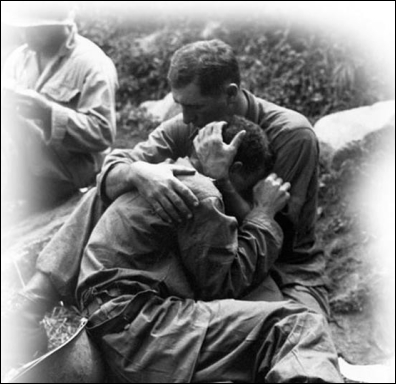
Why did one Newsweek reader suggest that its photograph "The Price of Victory: A Soldier Grieves for His Lost Buddy" should serve as the iconic image of the Korean War?
A) It gave an optimistic view of an imminent defeat of Communist-led forces.
B) It captured the sorrow and compassion that drew men together on the battlefield.
C) It reaffirmed the collaboration of a global coalition involved in the Korean War.
D) It alluded to teamwork, victory, and the triumph of democracy.

Unlock Deck
Unlock for access to all 48 flashcards in this deck.
Unlock Deck
k this deck
5
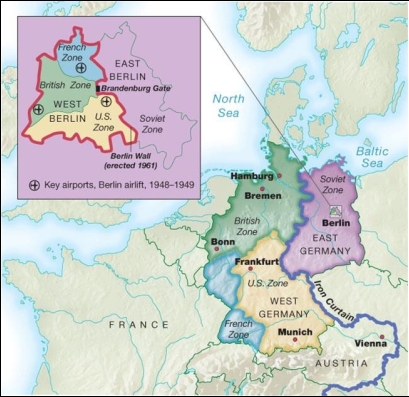
What information shown on this map led to Stalin's decision in 1948 to block all Western overland traffic to Berlin?
A) the construction of airports in Berlin's Western zones
B) the establishment of a wall between the Western and Soviet zones in Berlin
C) the reunification of the Allied zones that established a democratic West Germany
D) Churchill's declaration that an "iron curtain" had descended across Europe

Unlock Deck
Unlock for access to all 48 flashcards in this deck.
Unlock Deck
k this deck
6
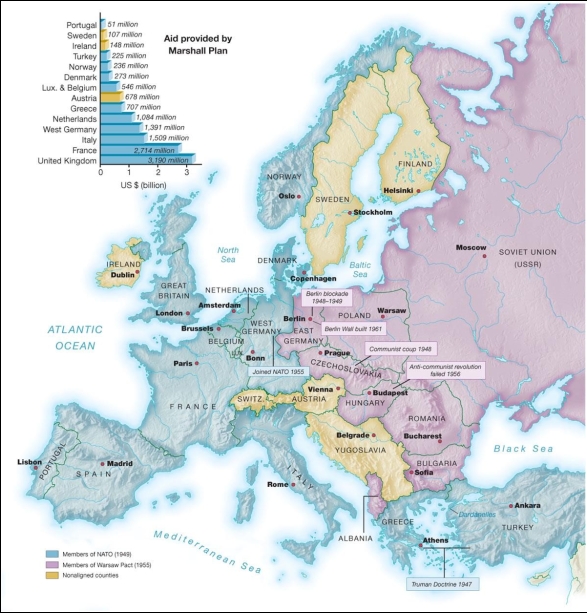
As indicated by this map, Europe in the postwar era was characterized by .
A) rival alliance systems representing democracy and communism
B) the establishment of democratic states in Eastern Europe
C) the fall of Western European states to communism
D) unsuccessful containment of communism in Greece and Turkey

Unlock Deck
Unlock for access to all 48 flashcards in this deck.
Unlock Deck
k this deck
7
What two events that took place in 1949 led to Communist gains during the Cold War?
A) creation of the Warsaw Pact and the failed anti-Communist revolution in Hungary
B) North Korea's invasion of South Korea and the Sino-Soviet Treaty between China and the USSR
C) the Communist-led coup in Czechoslovakia and the Soviet blockade of Berlin
D) Soviet acquisition of an atomic bomb and the Communists' takeover of China
A) creation of the Warsaw Pact and the failed anti-Communist revolution in Hungary
B) North Korea's invasion of South Korea and the Sino-Soviet Treaty between China and the USSR
C) the Communist-led coup in Czechoslovakia and the Soviet blockade of Berlin
D) Soviet acquisition of an atomic bomb and the Communists' takeover of China

Unlock Deck
Unlock for access to all 48 flashcards in this deck.
Unlock Deck
k this deck
8
General Douglas MacArthur's statement that "there is no substitute for victory" signified his
A) conviction that the United States was destined to regulate world affairs
B) belief that military victory could not compensate for the loss of human lives
C) desire to destroy communism through whatever means necessary
D) support for an all-out war utilizing nuclear weapons
A) conviction that the United States was destined to regulate world affairs
B) belief that military victory could not compensate for the loss of human lives
C) desire to destroy communism through whatever means necessary
D) support for an all-out war utilizing nuclear weapons

Unlock Deck
Unlock for access to all 48 flashcards in this deck.
Unlock Deck
k this deck
9
In committing American troops to combat in Korea, President Truman .
A) quickly unified a coalition of European powers against North Korea
B) requested that Congress declare war against North Korea
C) did not consult with Congress
D) worked through the United Nations
A) quickly unified a coalition of European powers against North Korea
B) requested that Congress declare war against North Korea
C) did not consult with Congress
D) worked through the United Nations

Unlock Deck
Unlock for access to all 48 flashcards in this deck.
Unlock Deck
k this deck
10
The term iron curtain in Winston Churchill's 1946 speech referred to the
A) figurative barrier separating Eastern from Western Europe
B) Berlin Wall
C) Soviet Union's blockade of West Berlin
D) military strength of NATO
A) figurative barrier separating Eastern from Western Europe
B) Berlin Wall
C) Soviet Union's blockade of West Berlin
D) military strength of NATO

Unlock Deck
Unlock for access to all 48 flashcards in this deck.
Unlock Deck
k this deck
11
What does this photograph of President Harry Truman holding a copy of the Chicago Tribune the day after the 1948 election imply about the outcome of that election?
A) Truman actually won the election despite a three-way split in the Democratic Party.
B) Truman was relieved that he no longer had to deal with the burdens of the presidency.
C) Truman lost the support of loyal Democrats that included African Americans and laborers.
D) Truman won a very narrow victory over Dewey in the Electoral College.
A) Truman actually won the election despite a three-way split in the Democratic Party.
B) Truman was relieved that he no longer had to deal with the burdens of the presidency.
C) Truman lost the support of loyal Democrats that included African Americans and laborers.
D) Truman won a very narrow victory over Dewey in the Electoral College.

Unlock Deck
Unlock for access to all 48 flashcards in this deck.
Unlock Deck
k this deck
12
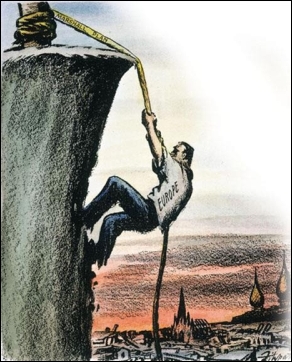
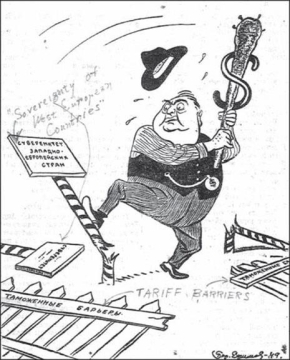
What do the cartoon on the left by American illustrator Daniel R. Patrick and the one on the right that appeared in the Soviet newspaper Izvestiya imply about the Marshall Plan?
A) The American cartoon blames the Soviet Union for Europe's current troubles, while the Soviet cartoon blames the destruction in Europe on the United States.
B) The American cartoon views this plan as a way for Europe to distance itself from the Soviet Union, while the Soviet cartoon sees this plan as a way for the United States to control European economies.
C) Both the American and Soviet cartoons show that the Marshall Plan was not economically successful in Europe.
D) Both the American and Soviet cartoons call for the establishment of a European Union to manage its members' economies.

Unlock Deck
Unlock for access to all 48 flashcards in this deck.
Unlock Deck
k this deck
13
The analysis of Soviet communism in the "long telegram" sent by diplomat George F. Kennan became the basis for .
A) a last attempt to establish good relations with the Soviet Union
B) the abandonment of commercial ties with Eastern Europe and the Soviet Union
C) the discontinuation of aid to Greece and Turkey
D) the United States' policy of containment
A) a last attempt to establish good relations with the Soviet Union
B) the abandonment of commercial ties with Eastern Europe and the Soviet Union
C) the discontinuation of aid to Greece and Turkey
D) the United States' policy of containment

Unlock Deck
Unlock for access to all 48 flashcards in this deck.
Unlock Deck
k this deck
14
How does this photograph of U.S. and Soviet troops greeting each other on a bridge spanning Germany's Elbe River at the end of World War II contradict imminent diplomatic relations between these two nations?
A) Both nations would be openly fighting each other in a military conflict.
B) Both nations would be in a Cold War with each other over competing ideological views, escalating a nuclear arms race, and dealing with global confrontations.
C) Both nations would agree to mutual military disarmament and collaboratively lead peace- keeping forces from the United Nations.
D) Both nations would revert to isolationism and avoid establishing strong global presences.
A) Both nations would be openly fighting each other in a military conflict.
B) Both nations would be in a Cold War with each other over competing ideological views, escalating a nuclear arms race, and dealing with global confrontations.
C) Both nations would agree to mutual military disarmament and collaboratively lead peace- keeping forces from the United Nations.
D) Both nations would revert to isolationism and avoid establishing strong global presences.

Unlock Deck
Unlock for access to all 48 flashcards in this deck.
Unlock Deck
k this deck
15
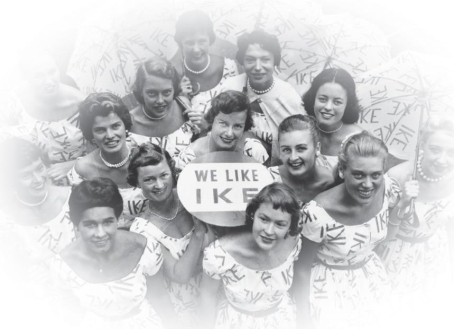
As can be seen in this image, what did Dwight D. Eisenhower seem to represent to Americans beleaguered by the Cold War?
A) valor
B) grace
C) nonchalance
D) optimism

Unlock Deck
Unlock for access to all 48 flashcards in this deck.
Unlock Deck
k this deck
16

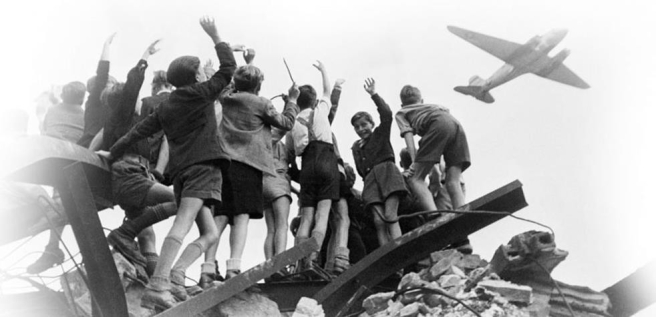
What ironic element regarding the Berlin airlift of 1948-1949 does this photograph capture?
A) German children mistrusted Allied planes despite the fact that they were receiving food aid.
B) The food dropped on Berlin was limited to the same gruel that German children were already eating.
C) German children still used the Nazi salute to greet others despite Hitler's defeat.
D) German children cheerfully greet an American plane from the rubble that similar planes created just a few years before.

Unlock Deck
Unlock for access to all 48 flashcards in this deck.
Unlock Deck
k this deck
17
The United States abandoned its traditional non-interventionist stance when it tried to contain the spread of communism in Greece and Turkey through .
A) NATO
B) the Truman Doctrine
C) the Marshall Plan
D) the Berlin Airlift
A) NATO
B) the Truman Doctrine
C) the Marshall Plan
D) the Berlin Airlift

Unlock Deck
Unlock for access to all 48 flashcards in this deck.
Unlock Deck
k this deck
18
Why was the conflict between the United States and the Soviet Union referred to as a "cold" war?
A) Each side regarded the other with distrust.
B) The conflict lasted for decades.
C) The two nations never fought each other directly.
D) A nuclear arms race fueled citizens' fears.
A) Each side regarded the other with distrust.
B) The conflict lasted for decades.
C) The two nations never fought each other directly.
D) A nuclear arms race fueled citizens' fears.

Unlock Deck
Unlock for access to all 48 flashcards in this deck.
Unlock Deck
k this deck
19
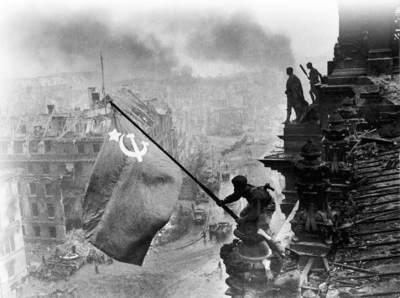
How does this photograph of a Russian soldier waving the Soviet flag from the roof of the German Reichstag above the ruins of Berlin address one of Soviet dictator Joseph Stalin's postwar goals?
A) Stalin wanted to help Germany reestablish itself as a powerful military state.
B) Stalin believed that opening Germany to free markets would bring it closer to the USSR.
C) Stalin feared future German invasions and set up puppet states in Eastern Europe to protect the USSR's borders.
D) Stalin favored reconciliation with Germany now that it had been defeated in World War II.

Unlock Deck
Unlock for access to all 48 flashcards in this deck.
Unlock Deck
k this deck
20
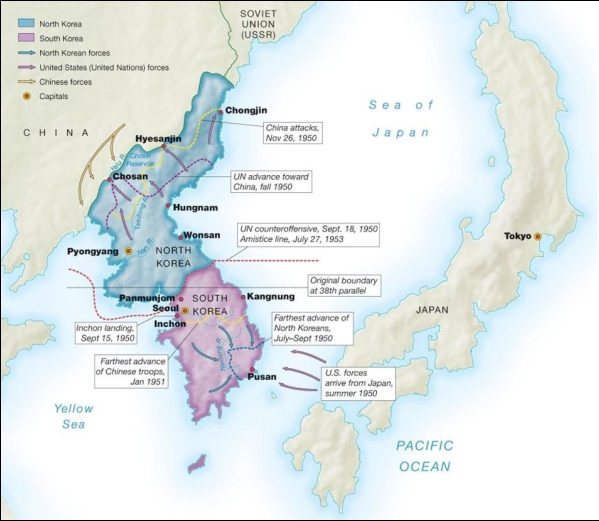
Based on this map, what generalization can be made about the Korean War during the first year of this conflict?
A) The advantage on the battlefield swung back and forth and later resulted in a stalemate.
B) The war was mostly fought in the surrounding bodies of water off the Korean peninsula.
C) Communist control was established on the entire Korean peninsula.
D) UN forces under Douglas MacArthur launched an invasion of China.

Unlock Deck
Unlock for access to all 48 flashcards in this deck.
Unlock Deck
k this deck
21
Arthur Miller wrote the play The Crucible to criticize the hysteria of the Second Red Scare and compare the HUAC investigations to .
A) the Sacco and Vanzetti trial
B) the treason committed by Benedict Arnold
C) Lincoln's suspension of habeas corpus during the Civil War
D) the Salem witch trials
A) the Sacco and Vanzetti trial
B) the treason committed by Benedict Arnold
C) Lincoln's suspension of habeas corpus during the Civil War
D) the Salem witch trials

Unlock Deck
Unlock for access to all 48 flashcards in this deck.
Unlock Deck
k this deck
22

Although it was just the size of a basketball and weighed 183 pounds, the Sputnik satellite
A) was the United States' first attempt to enter the "space race" against the Soviet Union
B) originally was intended to promote peaceful functions such as transmitting television images
C) symbolized Soviet technological superiority and fueled the USSR's arms race with the United States
D) had little impact on the development of American satellite technology

Unlock Deck
Unlock for access to all 48 flashcards in this deck.
Unlock Deck
k this deck
23
During the Eisenhower administration, Secretary of State John Foster Dulles announced in 1954 an American foreign policy that called for _ in response to a Soviet attack.
A) the use of conventional military forces
B) massive nuclear retaliation
C) NATO air strikes
D) an immediate appeal for peace
A) the use of conventional military forces
B) massive nuclear retaliation
C) NATO air strikes
D) an immediate appeal for peace

Unlock Deck
Unlock for access to all 48 flashcards in this deck.
Unlock Deck
k this deck
24
According to Congressman Richard Nixon, the Alger Hiss case was significant because, for the first time, it showed the American public that .
A) domestic communism was a threat to the security of the nation
B) atomic secrets had been passed on to the Soviets
C) a person could be imprisoned for committing perjury
D) someone convicted of spying was executed
A) domestic communism was a threat to the security of the nation
B) atomic secrets had been passed on to the Soviets
C) a person could be imprisoned for committing perjury
D) someone convicted of spying was executed

Unlock Deck
Unlock for access to all 48 flashcards in this deck.
Unlock Deck
k this deck
25
Who was journalist Edward R. Murrow referring to when he stated that "no one man can terrorize a whole nation unless we are all his accomplices."?
A) President Dwight D. Eisenhower
B) Senator Joseph McCarthy
C) Alger Hiss
D) Soviet premier Nikita Khrushchev
A) President Dwight D. Eisenhower
B) Senator Joseph McCarthy
C) Alger Hiss
D) Soviet premier Nikita Khrushchev

Unlock Deck
Unlock for access to all 48 flashcards in this deck.
Unlock Deck
k this deck
26
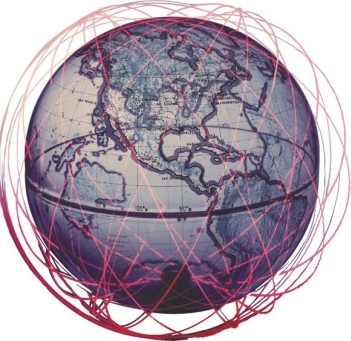
This illustration from Life magazine showing the orbits of the Sputnik satellite characterizes the threat from the Soviet Union to the United States as being .
A) easily penetrable
B) purely fantastic
C) inescapable
D) more symbolic than real

Unlock Deck
Unlock for access to all 48 flashcards in this deck.
Unlock Deck
k this deck
27
How was the Second Red Scare different from the First Red Scare?
A) The Second Red Scare lasted for nearly a decade, while the first one lasted a few months.
B) The Second Red Scare targeted immigrants rather than native-born American citizens.
C) The Second Red Scare focused more on terrorist activities rather than spying.
D) The Second Red Scare received less media publicity than the First Red Scare.
A) The Second Red Scare lasted for nearly a decade, while the first one lasted a few months.
B) The Second Red Scare targeted immigrants rather than native-born American citizens.
C) The Second Red Scare focused more on terrorist activities rather than spying.
D) The Second Red Scare received less media publicity than the First Red Scare.

Unlock Deck
Unlock for access to all 48 flashcards in this deck.
Unlock Deck
k this deck
28
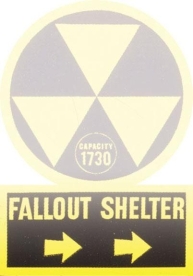
During the early 1960s, what type of message did a fallout shelter sign like the one pictured above send to the American public?
A) It prompted them to use the newly-created interstate highway system as an escape route from large cities.
B) It served as a daily reminder of the nuclear threat faced by the United States.
C) It made them feel inadequate because many could not afford to build personal bomb shelters.
D) It showed that there was greater concern for protecting public officials rather than the general public.

Unlock Deck
Unlock for access to all 48 flashcards in this deck.
Unlock Deck
k this deck
29
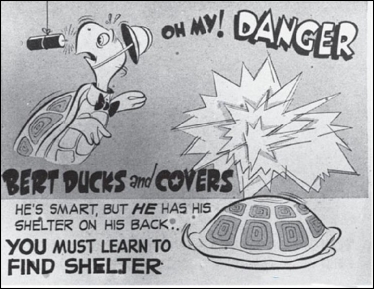

How did the civil defense instructions on "duck and cover" distributed to school children and the "before" and "after" photographs from a 1953 test explosion in the Nevada desert send a mixed message about surviving a nuclear attack?
A) The civil defense instructions warned that hiding underneath something protected against flying debris, while the photographs suggested that victims had enough time to flee a building.
B) The civil defense instructions depicted a nuclear blast as having the same impact as a stick of dynamite, while the photographs demonstrated a more powerful explosion.
C) The civil defense instructions implied that people could safely survive an attack if they hid under something, while the photographs contradicted this by showing complete destruction happening within seconds of impact.
D) The civil defense instructions could not guarantee personal safety in a nuclear attack, while the photographs showed that victims had a chance for survival.

Unlock Deck
Unlock for access to all 48 flashcards in this deck.
Unlock Deck
k this deck
30
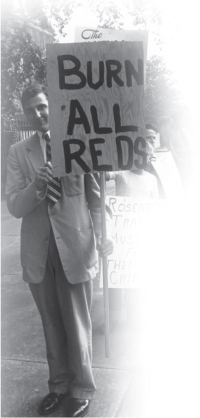
Protesters such as this young man urged the U.S. government to execute Julius and Ethel Rosenberg, thus reflecting .
A) the anger many Americans felt toward people who they believed betrayed the nation
B) the belief that the Rosenbergs were being unfairly persecuted for their radical beliefs
C) support for advancing anti-Semitic practices in the United States
D) the idea that the Communist menace to the United States was exaggerated

Unlock Deck
Unlock for access to all 48 flashcards in this deck.
Unlock Deck
k this deck
31
The purpose of U-2 planes developed by the United States was to .
A) collect intelligence through spying missions on Soviet military installations
B) launch ICBM missiles against the Soviet Union
C) conduct aerial bombings against the Soviet Union and its allies
D) patrol American air space for potential missile threats launched by the Soviet Union
A) collect intelligence through spying missions on Soviet military installations
B) launch ICBM missiles against the Soviet Union
C) conduct aerial bombings against the Soviet Union and its allies
D) patrol American air space for potential missile threats launched by the Soviet Union

Unlock Deck
Unlock for access to all 48 flashcards in this deck.
Unlock Deck
k this deck
32
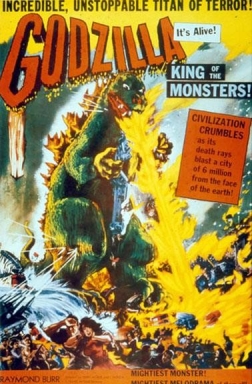
Although edited for American audiences, the 1954 Japanese film classic Godzilla included original critical commentary on American that awakened this destructive, fire- breathing monster.
A) nuclear testing
B) military tactics
C) Cold War policies
D) inability to contain communism

Unlock Deck
Unlock for access to all 48 flashcards in this deck.
Unlock Deck
k this deck
33
Such comic book characters as the Incredible Hulk and Spider-Man reflected American anxieties about .
A) totalitarianism
B) communism
C) crime
D) radioactivity
A) totalitarianism
B) communism
C) crime
D) radioactivity

Unlock Deck
Unlock for access to all 48 flashcards in this deck.
Unlock Deck
k this deck
34
The House Un-American Activities Committee (HUAC) actually originated during
A) the First Red Scare, when it first investigated communist activities
B) Reconstruction, when it investigated former Confederate supporters
C) the late nineteenth century, when it investigated the labor movement
D) World War II, when it investigated fascist threats
A) the First Red Scare, when it first investigated communist activities
B) Reconstruction, when it investigated former Confederate supporters
C) the late nineteenth century, when it investigated the labor movement
D) World War II, when it investigated fascist threats

Unlock Deck
Unlock for access to all 48 flashcards in this deck.
Unlock Deck
k this deck
35
What was one common feature shared by the Smith Act of 1940 and the McCarran Acts of 1950 and 1952?
A) the power to arrest greater number of people suspected of communism
B) curtailment of unions' right to strike
C) tightened restrictions on radical political activity
D) further reduction of African American civil rights
A) the power to arrest greater number of people suspected of communism
B) curtailment of unions' right to strike
C) tightened restrictions on radical political activity
D) further reduction of African American civil rights

Unlock Deck
Unlock for access to all 48 flashcards in this deck.
Unlock Deck
k this deck
36
Which of the following best characterizes the group of screenwriters known as the "Hollywood Ten"?
A) They advertised their belief that communists should be permanently exiled.
B) They blacklisted individuals suspected of being Communist Party sympathizers.
C) They refused to cooperate with HUAC investigations and were imprisoned.
D) They openly supported Screen Actors Guild president Ronald Reagan in reporting potential Communists.
A) They advertised their belief that communists should be permanently exiled.
B) They blacklisted individuals suspected of being Communist Party sympathizers.
C) They refused to cooperate with HUAC investigations and were imprisoned.
D) They openly supported Screen Actors Guild president Ronald Reagan in reporting potential Communists.

Unlock Deck
Unlock for access to all 48 flashcards in this deck.
Unlock Deck
k this deck
37
According to former First Lady Eleanor Roosevelt in her 1947 "My Day" column, one of HUAC's major targets in her opinion was the film industry, most likely because .
A) so many movies of the time had overt pro-communist messages
B) the Communist Party was known to have infiltrated the studio system
C) the movies had broad power to influence American views
D) many actors, screenwriters, directors, and producers were rumored to be communists
A) so many movies of the time had overt pro-communist messages
B) the Communist Party was known to have infiltrated the studio system
C) the movies had broad power to influence American views
D) many actors, screenwriters, directors, and producers were rumored to be communists

Unlock Deck
Unlock for access to all 48 flashcards in this deck.
Unlock Deck
k this deck
38
How did President Eisenhower decide to handle Joseph McCarthy?
A) He secretly encouraged McCarthy to continue naming people who were part of the Communist Party.
B) He decided to wait and let McCarthy self-destruct.
C) He asked the Senate to censure McCarthy.
D) He launched an investigation into McCarthy and his methods.
A) He secretly encouraged McCarthy to continue naming people who were part of the Communist Party.
B) He decided to wait and let McCarthy self-destruct.
C) He asked the Senate to censure McCarthy.
D) He launched an investigation into McCarthy and his methods.

Unlock Deck
Unlock for access to all 48 flashcards in this deck.
Unlock Deck
k this deck
39
What specific event discredited Joseph McCarthy and led to his public downfall?
A) the Army-McCarthy televised hearings
B) the trial and execution of Julius and Ethel Rosenberg
C) the blacklisting of the "Hollywood Ten"
D) his accusation of President Eisenhower's having connections to the Communist Party
A) the Army-McCarthy televised hearings
B) the trial and execution of Julius and Ethel Rosenberg
C) the blacklisting of the "Hollywood Ten"
D) his accusation of President Eisenhower's having connections to the Communist Party

Unlock Deck
Unlock for access to all 48 flashcards in this deck.
Unlock Deck
k this deck
40
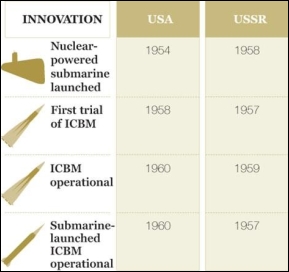
As demonstrated in this chart showing key developments in early Cold War nuclear weaponry, the _
A) United States developed ICBM missiles before the Soviet Union
B) Soviet Union had a clear advantage over the United States in developing nuclear weapons
C) United States had a clear advantage over the Soviet Union in developing nuclear weapons
D) United States and the Soviet Union engaged in intense competition to develop more sophisticated nuclear weapons

Unlock Deck
Unlock for access to all 48 flashcards in this deck.
Unlock Deck
k this deck
41
The Cuban Missile Crisis began when .
A) the Soviet Union encountered a U.S. blockade in Cuban waters
B) the United States discovered that the Soviet Union was installing nuclear weapons in Cuba
C) the United States attempted to overthrow Fidel Castro
D) Fidel Castro seized power and took over the island of Cuba
A) the Soviet Union encountered a U.S. blockade in Cuban waters
B) the United States discovered that the Soviet Union was installing nuclear weapons in Cuba
C) the United States attempted to overthrow Fidel Castro
D) Fidel Castro seized power and took over the island of Cuba

Unlock Deck
Unlock for access to all 48 flashcards in this deck.
Unlock Deck
k this deck
42
Why did Khrushchev decide to construct a wall to separate East Berlin from West Berlin?
A) President Kennedy was ordering airlifts of food and medical aid to East Berlin.
B) Residents of East Berlin were fleeing to West Berlin in search of freedom and prosperity.
C) Residents of West Berlin were organizing anti-communist protests in East Berlin.
D) Khrushchev was hoping to draw the West into a nuclear war.
A) President Kennedy was ordering airlifts of food and medical aid to East Berlin.
B) Residents of East Berlin were fleeing to West Berlin in search of freedom and prosperity.
C) Residents of West Berlin were organizing anti-communist protests in East Berlin.
D) Khrushchev was hoping to draw the West into a nuclear war.

Unlock Deck
Unlock for access to all 48 flashcards in this deck.
Unlock Deck
k this deck
43
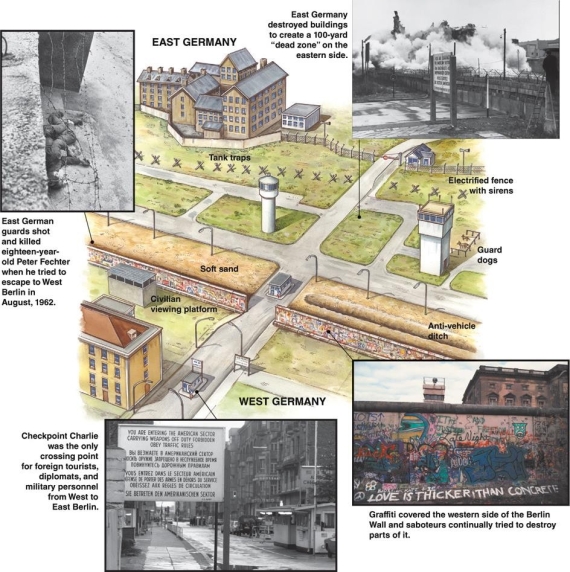
What does the graffiti-filled image of the western side of the Berlin Wall that is shown in the lower right corner reveal about the residents of West Berlin?
A) their desire to maintain the wall
B) their anger and irreverence toward the wall
C) their playfulness with and acceptance of the wall
D) their fear and desperation about the wall

Unlock Deck
Unlock for access to all 48 flashcards in this deck.
Unlock Deck
k this deck
44
Which of the following best describes the Limited Test Ban Treaty?
A) It marked the beginning of a new alliance between the United States and the Soviet Union.
B) It was signed by China and France as well as the United States and the Soviet Union.
C) It provided for on-site inspection of Soviet missile sites.
D) It banned nuclear testing in the atmosphere and underwater.
A) It marked the beginning of a new alliance between the United States and the Soviet Union.
B) It was signed by China and France as well as the United States and the Soviet Union.
C) It provided for on-site inspection of Soviet missile sites.
D) It banned nuclear testing in the atmosphere and underwater.

Unlock Deck
Unlock for access to all 48 flashcards in this deck.
Unlock Deck
k this deck
45
Why did the 1961 Bay of Pigs operation hurt the credibility of President Kennedy?
A) He denounced Fidel Castro as a dictator.
B) He supported the efforts of Cuban exiles against Fidel Castro.
C) He claimed that the United States had not been involved in this operation.
D) He took credit for an invasion that had been planned under President Eisenhower.
A) He denounced Fidel Castro as a dictator.
B) He supported the efforts of Cuban exiles against Fidel Castro.
C) He claimed that the United States had not been involved in this operation.
D) He took credit for an invasion that had been planned under President Eisenhower.

Unlock Deck
Unlock for access to all 48 flashcards in this deck.
Unlock Deck
k this deck
46
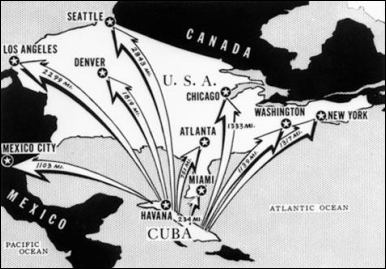
Based on this map, why did President Kennedy have legitimate concerns about short-range and intermediate-range nuclear armed Soviet missiles in Cuba?
A) Cuba's proximity to the United States made it easy for the Soviets to conduct a land invasion.
B) Cuba had once been a strong economic and political ally to the United States.
C) All major cities on the continental United States were within target range of these missiles.
D) The United States had no such missiles on the mainland to retaliate against Cuba.

Unlock Deck
Unlock for access to all 48 flashcards in this deck.
Unlock Deck
k this deck
47
The Soviet Union's use of troops to suppress an uprising in Hungary in 1956 showed that Soviet premier Nikita Khrushchev .
A) intended to maintain control of Eastern Europe
B) was unlikely to initiate a nuclear strike in Eastern Europe
C) planned to extend the reach of the Soviet Union into Western Europe
D) would disregard all international treaties meant to preserve peace in Europe
A) intended to maintain control of Eastern Europe
B) was unlikely to initiate a nuclear strike in Eastern Europe
C) planned to extend the reach of the Soviet Union into Western Europe
D) would disregard all international treaties meant to preserve peace in Europe

Unlock Deck
Unlock for access to all 48 flashcards in this deck.
Unlock Deck
k this deck
48
President Kennedy's main strategy in dealing with the Cuban Missile Crisis was to
A) impose a naval blockade of Cuban ports until the crisis was resolved
B) order the deployment of additional missiles in Turkey
C) conduct negotiations without telling the public about the missile threat
D) withdraw American troops from Guantanamo Base in Cuba
A) impose a naval blockade of Cuban ports until the crisis was resolved
B) order the deployment of additional missiles in Turkey
C) conduct negotiations without telling the public about the missile threat
D) withdraw American troops from Guantanamo Base in Cuba

Unlock Deck
Unlock for access to all 48 flashcards in this deck.
Unlock Deck
k this deck



